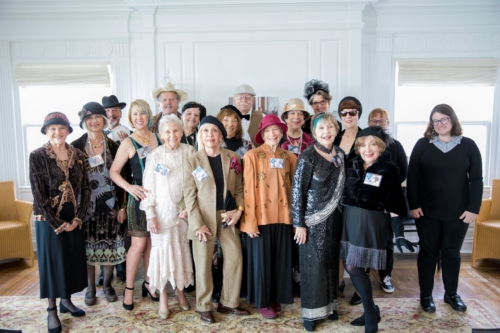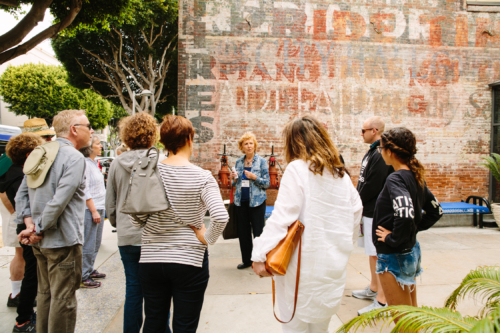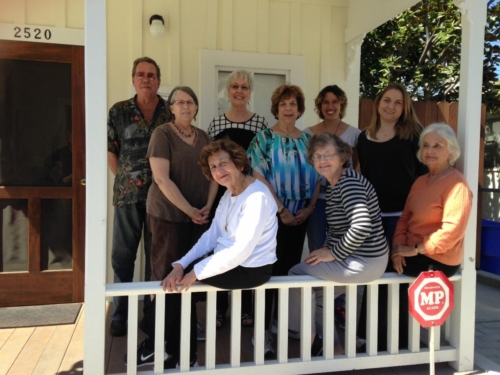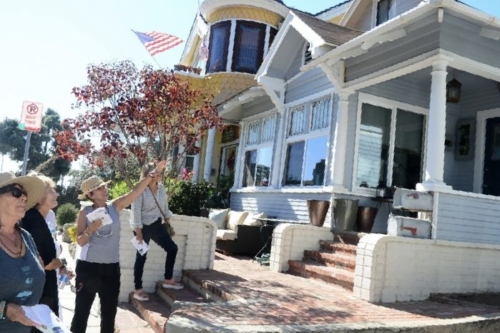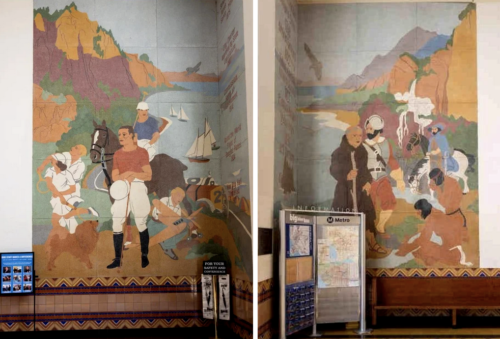Volunteer with the Santa Monica Conservancy!
The Santa Monica Conservancy is seeking new volunteers and docents. Volunteering is a unique opportunity to make an impact on historic preservation and meet others in the community who share your interest in local history and preservation. Opportunities are open to anyone with the time and interest. No prior experience is necessary. Apply online today or email us at volunteer@smconservancy.org for an application form.
Docent & Volunteer Opportunities
Our docents and volunteers actively engage a diverse audience locals, tourists, history buffs, preservationists, and students about the architecture, history, and importance of preserving our architectural heritage.
Annenberg Community Beach House Docent
This world-class destination attracts thousands of international tourists and local residents to its multi-faceted recreational and cultural activities year-round. The site originally was a lavish estate built by media tycoon William Randolph Hearst in the 1920s for actress Marion Davies, who hosted parties for the Hollywood crowd. The Guest House and pool, designed by acclaimed architect Julia Morgan, form the historic core of a place that has evolved over time to the free public beach club that opened in 2009. The ACBH combines historic restoration/adaptive reuse with new facilities by Fred Fisher & Partners that retain memories of the Hearst/Davies era.
Tours are offered weekly, Friday – Sunday from 12-2 p.m. during the spring, fall, and winter. During the summer, tours are offered weekly, Friday – Monday from 12-2 p.m. Docents are asked to volunteer twice a month. Apply now!
Downtown Walking Tour Docent
Santa Monica’s downtown is a kaleidoscope of architecture, history, and economic growth from its beginnings in 1875 to the modern metropolis it is today. This signature tour takes a deep dive into Santa Monica places and stories as well as the evolution of the city, providing a rich educational experience for guests. Tours begin at the city’s first landmark, the 1875 Rapp Saloon, which at one time served as City Hall, and include sections of the Promenade, Ocean Avenue and the Pier, and conclude at a lavish Art Deco hotel that housed a speakeasy during Prohibition.
Tours are offered every Saturday morning at 10 a.m. Docents lead tours independently and are asked to volunteer once every other month. Docent trainings will be held on Saturdays at 10 a.m. Apply now!
Preservation Resource Center Docent
The last surviving shotgun house in Ocean Park, this little house narrowly escaped demolition through the efforts of a coalition of community activists assisted by the City of Santa Monica. Shotgun houses are small wood frame homes with rooms stacked one behind the other without a hallway, once popular in Ocean Park’s early days for beachfront living. Under the guardianship of the Conservancy, the shotgun house was moved twice before undergoing a comprehensive rehabilitation to become the Conservancy’s headquarters and Preservation Resource Center. Serving as a model of adaptive reuse, the Center provides free resources and tours to our community.
Tours are currently offered one weekend a month from 12-2 p.m. and will be gradually expanded. Docents are asked to volunteer twice a month. Apply now!
Program Committee Volunteer
Volunteers develop and present physical and virtual educational programs, such as tours of historic places, visits to landmark buildings, explorations of the City’s heritage, meetings and lectures. Past programs have included tours of Adelaide Drive, the Third Street Historic District, Palisades Park, landmark homes, the city’s street murals and more. The Committee’s award-winning Santa Monica Mosaic webinar series explores numerous aspects of our diverse cultural history, including African American, Japanese American, Jewish American, Mexican American, and Tongva communities.
The Program Committee conducts monthly planning meetings and presents or supports events throughout the year, including the Conservancy’s Annual Meeting in the spring, a fall tour, a holiday party, the ongoing Mosaic series and other webinars. In addition, the Committee contributes text, photo and video content to the Conservancy’s website. Committee volunteers are aligned with projects and tasks that reflect their interests, skills, experience and personal schedules. Apply now!
Our team will review applications and reach out with additional information. Thank you for your interest in our docent and volunteer programs!

